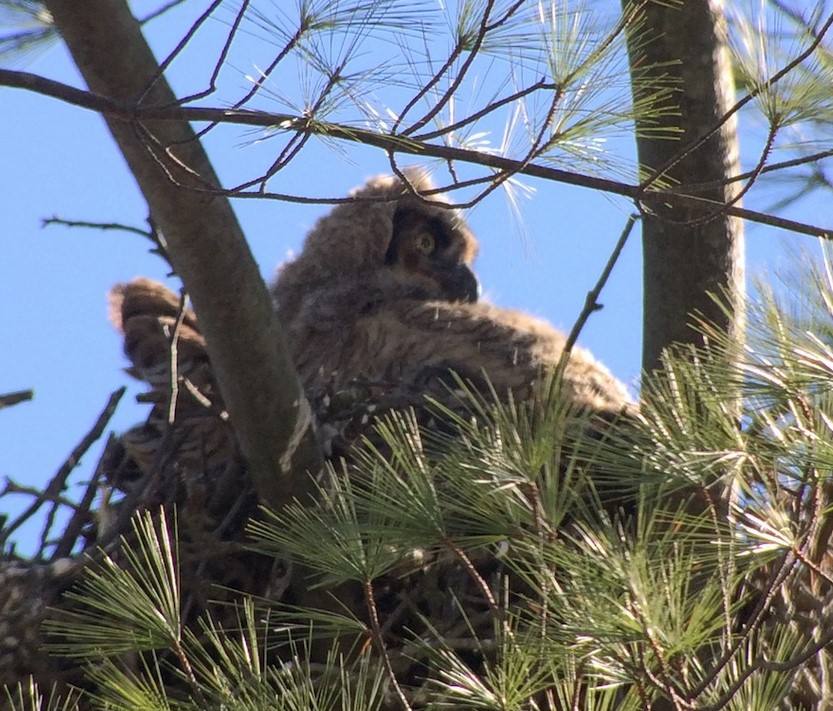Birders often debate the pros and cons of reporting rare species. Putting the word out allows people to see something new, and gains attention for the value of birds and birding. But, there is always a risk that the attention will create disturbance and maybe even harm. This dilemma is particularly acute when it comes to nesting species.
A major goal of the atlas is to identify where birds are nesting, and the more precisely we can locate species, the more we can learn about their habitat needs. Historically this has not been a serious problem for atlas projects, which map distributions at a fairly coarse scale. For example, Connecticut’s atlas blocks are approximately 25 km2 in size – mapping at this scale usually does not reveal much about where a species is nesting.
The advent of smart phones and mapping apps, however, has made it easy to provide pinpoint locations for sightings, including nests. In general, this is a boon to ecologists, and providing specific locations is something that will help us better understand the habitat needs of Connecticut’s birds. But precisely identifying nest locations should be done thoughtfully if that report is going to be made public. So, if you are submitting data through eBird, a largely open-access forum, what should you do?
Reporting exact nest locations is probably fine when a nest is obvious to people (an osprey platform or bluebird box), inaccessible (peregrines on a skyscraper in downtown Hartford), already widely reported (boat-tailed grackles at Hammonasset), or if it involves very common urban or suburban species (a cardinal or robin nest in your yard).
Nests of most widespread songbirds and many common non-passerines are probably also fine to report. Many people might be interested in an ovenbird or a marsh wren nest, but few are going to travel out of their way to see one. Moreover, nests of most species are quite hard to find, even if you know more or less where they are, so even a point location in eBird is unlikely to lead people right to the nest.
Rare or hard-to-observe species, however, can be a different matter. For example, the discovery of nesting Henslow’s sparrows in Connecticut would attract a lot of attention and – given the species’ tendency to hide in the grass – potentially tempt people to act in ways that could harm the birds. Similarly, posting information about owl nests can often result in disturbance and many birders avoid publicizing these locations (doing so is prohibited on many birding listservs, including CTBirds).
Any time you are concerned about reporting a nest location or other sensitive sighting, there are several options that will still provide us with the information we need for the atlas:
- Report the nest, but do not provide a precise location in eBird. From a scientific perspective, the closer the point you report to the actual nest location the better, so this is not the best option (though much better than not submitting data at all). If you have serious concerns about a record, though, placing the point a short distance away will greatly reduce risk for most species. For the most sensitive cases, you could simply create a point in the middle of your block. If you do put the point in the “wrong” place, though, please note this in the checklist comments so that people are not misled when making conservation decisions or conducting scientific research.
- Wait until nesting is over. Most birds do not renest in the exact same location, so submitting a report after nesting is complete is not generally a problem. There are some exceptions though, including hawks, owls, and colonial species. And, if you find a species that is considered endangered in the state, please let the atlas team know as soon as possible so that we can inform the DEEP and ensure that appropriate actions are taken to maximize protection.
- Hide the location in eBird. Any time you submit data in eBird, you have the option to make the location “private”. This is an imperfect solution because the date and place of your birding trip will still be visible, but the birds you observed will not. As long as you share your checklist with the atlas project ebird account (ctbirdatlas), we will be able to access the data. This approach is also a good solution when you are birding on private property and do not want to attract people to a site. (Note that you can only make a location private when using the eBird web site – so reports submitted via the eBird app are not protected until you go the web site and hide them, and will consequently be picked up by eBird alerts.)
- Submit the data directly via a paper form. The easiest solution, of course, is simply not to post the information in a public form. Most of this post applies only to eBird data submissions, and although we encourage the use of eBird, we have purposely created multiple ways for people to submit data. So, if you have concerns about making information available to the general public, just go to the website, print off the relevant form, and submit it, either by mailing, or by scanning and emailing to the address given. The information will then be entered directly into the atlas database, bypassing eBird entirely. Atlas data will be made public eventually, but not until the end of the project. And data for any species that the state DEEP or the atlas coordinators consider sensitive will not be released with point locations.

Some great horned owls in Connecticut already have young that are close to fledging. Reporting owl nest is very important to the atlas project, because they can be hard to find, but making their location public is not advised. Photo by Tina Green (used with permission).